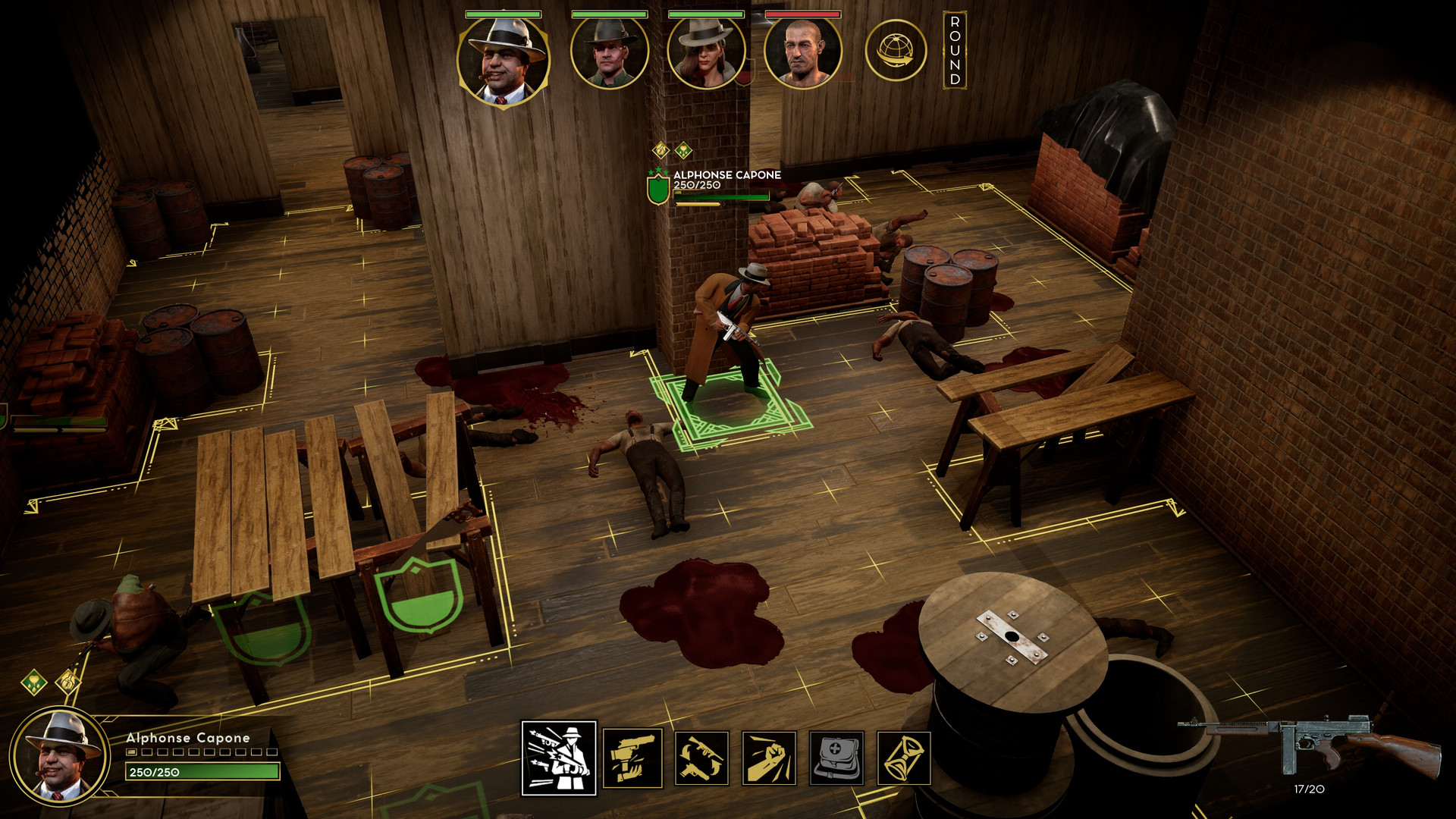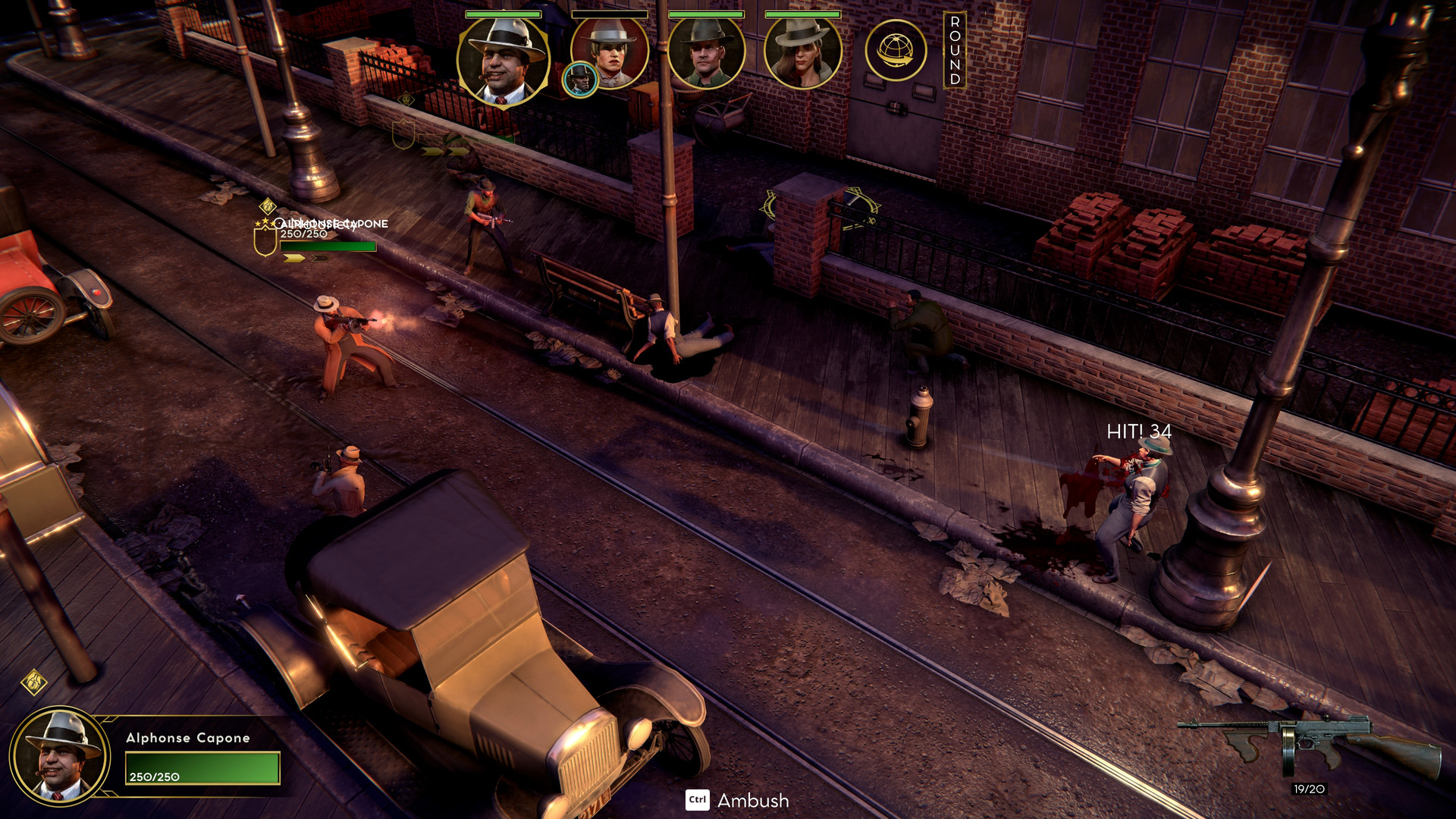The ’20s have finally rolled around again so it’s the perfect time to bust out the tailored suits and Jazz music. Unfortunately, most of us have been stuck inside since the start of 2020. A minor setback, but it has definitely hampered our ability to go out and start an empire on a whim. However, thanks to Romero Games and publisher Paradox Interactive, we can take a trip back to the roaring ’20s to the heart of prohibition-era Chicago to do just that! Empire of Sin is now available on console through the Xbox game pass.
In this tactical action-based strategy, you are given the opportunity to move to Chicago with the ambitious dream of conquering the seedy underbelly of crime. Fear not though, as you won’t simply be strolling in as a no-named schmuck that gets pushed around. No, you will pick one of 14 notable, real-life-inspired characters, including the original Scarface himself, Mr. Al Capone. Here’s where things get interesting though, instead of getting a one-sided game on tactical-based decisions on the killing floor, a second, and probably more important side of the game gets introduced for you to micro-manage your Empire in real-time. That’s right! It’s a two-for-one special, but, this is also where things can fall apart and seemingly work against each other if poorly managed.
For those of you who have dipped your toe in games such as X-Com, Gears Tactics, or the rather strange cross-over, Mario + Rabbits, the top-down overview gameplay will be a little more familiar to you. For those that need a refresher or are new to the genre, you control your team by assigning them an action before sitting back to watch the drama unfold. Each character has a set list of abilities that all cost AP (action points) and that includes moving a set amount of spaces around the environment or even taking a turn to reload. When it’s your turn, you can freely move the camera around the entire area to study the enemy locations and plan ahead. There is no time penalty for carefully formulating a plan and assessing both the situation and your inventory. Depending on your action you are placed in a queue that determines your next turn.

It can be both a hilarious or frustrating situation when you have two opposing characters standing within spitting distance of each other and continually missing shots. This is due to the percentage-based chances of every action, similar to an invisible dice roll. Each character will have certain traits that can be influenced based on what missions you pick up and how you shape your legacy. It pays to be careful though, as permadeath is a fundamental part of the game that will affect both you and the rest of Chicago. Any notable character has one life and if you are the unfortunate one to eat a belly full of lead then it’s game over then and there.
The other side of the coin is a little less visually inspiring, depending on your love for a good excel spreadsheet. A rather thorough and informative tutorial walks you through the aftermath of each gunfight and how that affected the economy of the game. Being the prohibition era, taking over rival buildings and converting them into illegal alcohol distilleries, supplying your speakeasy locations, and funding your new equipment so you can knock over the rest of the neighbourhood is mostly just a bunch of numbers.
Upgrading each location to improve the entertainment at the speakeasy or the quality of alcohol will cost you money, but in turn, increases your daily revenue. These actions will prompt certain interactions with rival gangs, so you will also have to invest in security so that when you are inevitably raided, you have a chance to defend your turf in another turn-based engagement.

I can certainly appreciate that the goal of the game wasn’t to set the bar for jaw-dropping visuals. In saying that, the jarringly awkward sit-down meetings with notorious gangsters are painfully stiff and takes away from any real sense of tension that a turf war could erupt at any moment. The city overview map to assess who owns what properties almost felt unfinished as it was quite literally a blank canvas of white building outlines.
Buildings filled in with a colour will indicate who owns that location much the same as a game of Monopoly. While on street level or in a building, I did appreciate the textures of the polished timber floorboards, or the patterned carpet trimming the Casino floors, making the blood streaks stand out nicely. The atmosphere of old Chicago has been beautifully realised with elegant lighting of the rain-soaked roads while snappy jazz music felt suitable to any situation.
It’s an odd one, there is plenty to do in Empire of Sin and it is designed for multiple playthroughs. There are police that should be more of a threat but ultimately just feel like an afterthought. Managing to wipe out all of Chicago’s crime families and be crowned Victorious could take a few in-game months to multiple years! The inconsistent revenue stream and the possibility that your character could inherit the accuracy of Stevie Wonder can dramatically impact satisfaction on any given playthrough. There are some instances while playing that I wish they focused a bit on one aspect of the game instead of trying to tick as many boxes as they can.

The Good
- When working, Tactical gameplay
- Encouraging to play multiple playthroughs
- Large pool of unique characters
The Bad
- Character animations are bland
- Diplomacy can be a slow experience
- Police force were barely an obstacle








